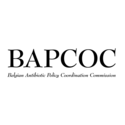In short
Bloodstream infections are serious infections that often result in death. Every year, thousands of patients in our country get a bloodstream infection while in hospital. Some bloodstream infections sustained in hospital can be avoided by following internationally recognised guidelines. Sciensano monitors how many bloodstream infections there are and draws up recommendations in order to reduce hospital-associated bloodstream infections.
Project description
The surveillance of hospital-associated bloodstream infections (i.e. bloodstream infections occurring two days after hospitalisation or later) is part of the activities to ensure good quality care.
Thanks to this surveillance, Sciensano is able:
- to monitor trends in hospital-associated bloodstream infections. We do this at both hospital and national level, so that we can evaluate and adjust preventive efforts
- monitor the causative microorganisms and their resistance profile.
Taking part in the National Surveillance of Bloodstream Infections as a hospital
All acute hospitals have been obliged to participate in this surveillance for at least three months a year since 2014 (RD 27.01.2015). They can start their participation on the first day of any quarter (1 January, 1 April, 1 July or 1 October).
The collection of bloodstream infection data, including the collection of denominator data, is carried out via the Healthdata platform. Go to the Healthdata support page for more information about accessing Healthdata and registering data via Healthdata. Specific information about the registration of bloodstream infection and denominator data via Healthdata (HD4DP) and about the preparation of a CSV file can be found on the Healthdata data collection page (click on ‘NSIH-SEP’ for the registration of bloodstream infection data and on ‘NSIH denominators’ for the registration of denominator data).
The bloodstream infection surveillance protocol (available in Dutch and French) gives a detailed description of the data collected via this surveillance. The protocol (available in Dutch and French) with information on filling in denominator data and on the commonly used reference lists and variables is also available.
Every year, Sciensano publishes a national report that is available to everyone (see below under ‘Results’). Hospitals must provide the surveillance data to Sciensano before the end of March. In addition to the national report, we also produce individual hospital-level feedback reports. These individual reports allow the hospital, among other things, to compare the occurrence of hospital-associated bloodstream infections with other hospitals and national averages. Only the hospital concerned may consult the individual report via the Healthdata reporting platform ‘Healthstat’ (see Healthstat support). We update these individual reports every three months.
Results
National and regional results are available via the annual reports:
- Annual report 2023 with surveillance data up to and including 2022
- Annual report 2022 with surveillance data up to and including 2021
- Annual report 2021 with surveillance data up to and including 2020
- Annual report 2020 with surveillance data up to and including 2019
- Annual report 2019 with surveillance data up to and including 2018
Sciensano's project investigator(s):
Service(s) working on this project
Partners




